After 9 months of drought, on the day we drove 1300 km (800 miles) up to Exmouth, the most North Western tip of Australia, it started dumping buckets of rain.  We have met an unexpected cyclone. We could hear the collective sigh of relief of all the Australian farmers, worrying about their thirsty and hungry cattle. But we couldn’t help but worry about the effect it will have on our plan to go swimming with the whale sharks. To make matters worse we realized that the school holidays and Easter were just about to begin so accommodations were going to be really tough to find.
We have met an unexpected cyclone. We could hear the collective sigh of relief of all the Australian farmers, worrying about their thirsty and hungry cattle. But we couldn’t help but worry about the effect it will have on our plan to go swimming with the whale sharks. To make matters worse we realized that the school holidays and Easter were just about to begin so accommodations were going to be really tough to find.
This was our second trip to Western Australia in as many months. On our first go the timing was off, as the whale sharks have not yet started their yearly migration. (Hm, I am noticing a pattern here.)
We drove up to experience Ningaloo Reef in all its glory – not very well known and lucky for us, much less popular than Great Barrier Reef. We were here to check the claim that this was the best reef in the world, with the healthiest coral, abundance of life and crystal clear visibility. Now we were worried that due to storms the whale shark swimming boat wouldn’t even sail.
But Aussies are tough and optimistic cookies. After a night of relentless rain, the dawn sky was gray and heavy as we boarded our boat.  Yet, the big smiles of the beautiful and fun young crew
Yet, the big smiles of the beautiful and fun young crew  of Ningaloo Discovery warmed up the morning and our mood. We were lucky to find ourselves in a small group of only eleven, as twenty is the usual group size. We had a young boy of nine in our midst. In case you think his parents were irresponsible freaks to let him do this, let me assure you that there is absolutely no danger, as whale sharks are indeed sharks by classification, but have no teeth and are only feeding on plankton and krill (like some toothless whales) by filtering it through their gills.
of Ningaloo Discovery warmed up the morning and our mood. We were lucky to find ourselves in a small group of only eleven, as twenty is the usual group size. We had a young boy of nine in our midst. In case you think his parents were irresponsible freaks to let him do this, let me assure you that there is absolutely no danger, as whale sharks are indeed sharks by classification, but have no teeth and are only feeding on plankton and krill (like some toothless whales) by filtering it through their gills. 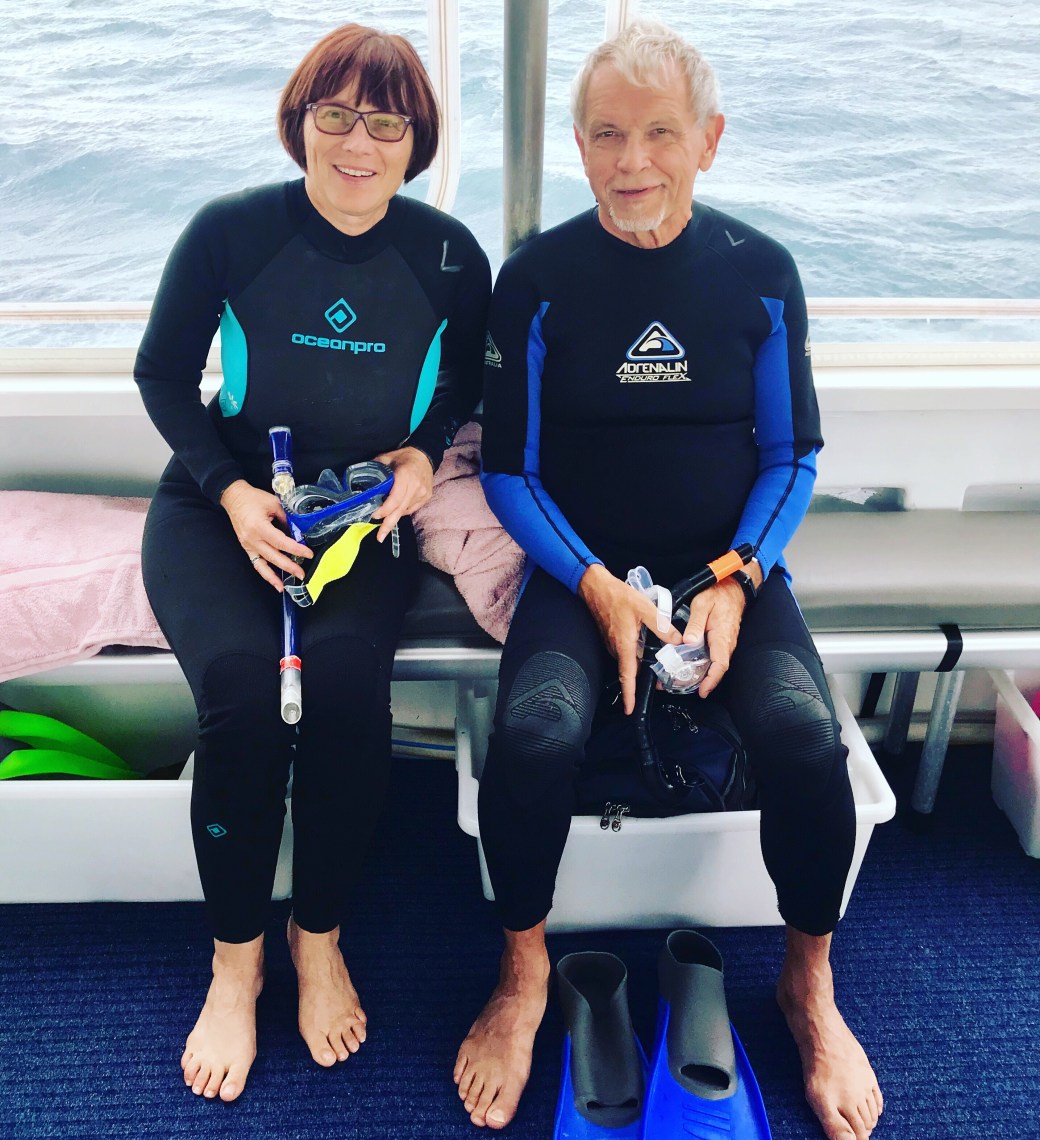 Very quickly we were kitted in wet suits, masks and flippers and thrown in cyclone cooled waters for a quick snorkel. It was to “get comfortable with our equipment”, but it was really to check if everyone was a competent enough swimmer. Too bad the sun was not out, as the coral was indeed abundant and quite striking even in the muted shades of purple and blue.
Very quickly we were kitted in wet suits, masks and flippers and thrown in cyclone cooled waters for a quick snorkel. It was to “get comfortable with our equipment”, but it was really to check if everyone was a competent enough swimmer. Too bad the sun was not out, as the coral was indeed abundant and quite striking even in the muted shades of purple and blue.
After we all climbed back up the crew revved up the engines to look for the whale sharks with the help of two spotter planes circling overhead. As only ten people are allowed at a time to swim with the whale shark, they divided us into two smaller groups, each accompanied by an instructor and an underwater photographer. We got precise instructions on how the swim will be conducted. You can only stay with the shark 10 minutes at a time. No touching his tail 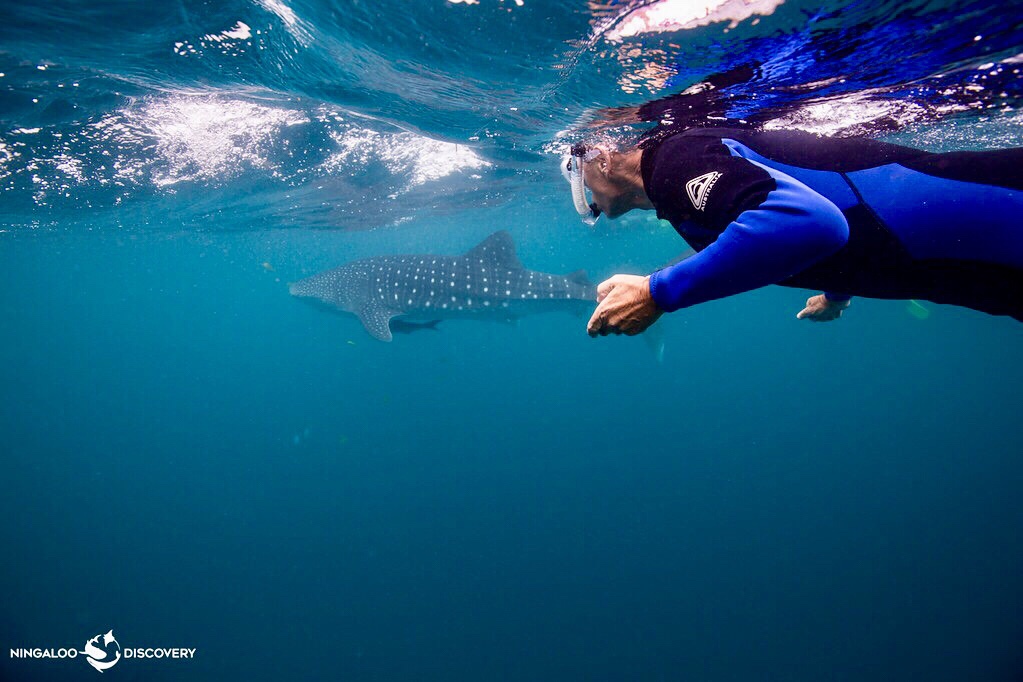 or riding on his back!
or riding on his back!  Line up behind the instructor, swim 3-4 m away and do not approach the whale shark’s head as you could interfere with its direction of movement and that would be disturbing its natural behavior.
Line up behind the instructor, swim 3-4 m away and do not approach the whale shark’s head as you could interfere with its direction of movement and that would be disturbing its natural behavior.  There are a few other places around the world, like Mozambique and Mexico, where one can swim with these cool animals, but operators there are not anywhere close to as disciplined, sensitive, or ethical.
There are a few other places around the world, like Mozambique and Mexico, where one can swim with these cool animals, but operators there are not anywhere close to as disciplined, sensitive, or ethical.
Our first attempt was a disappointment. The captain 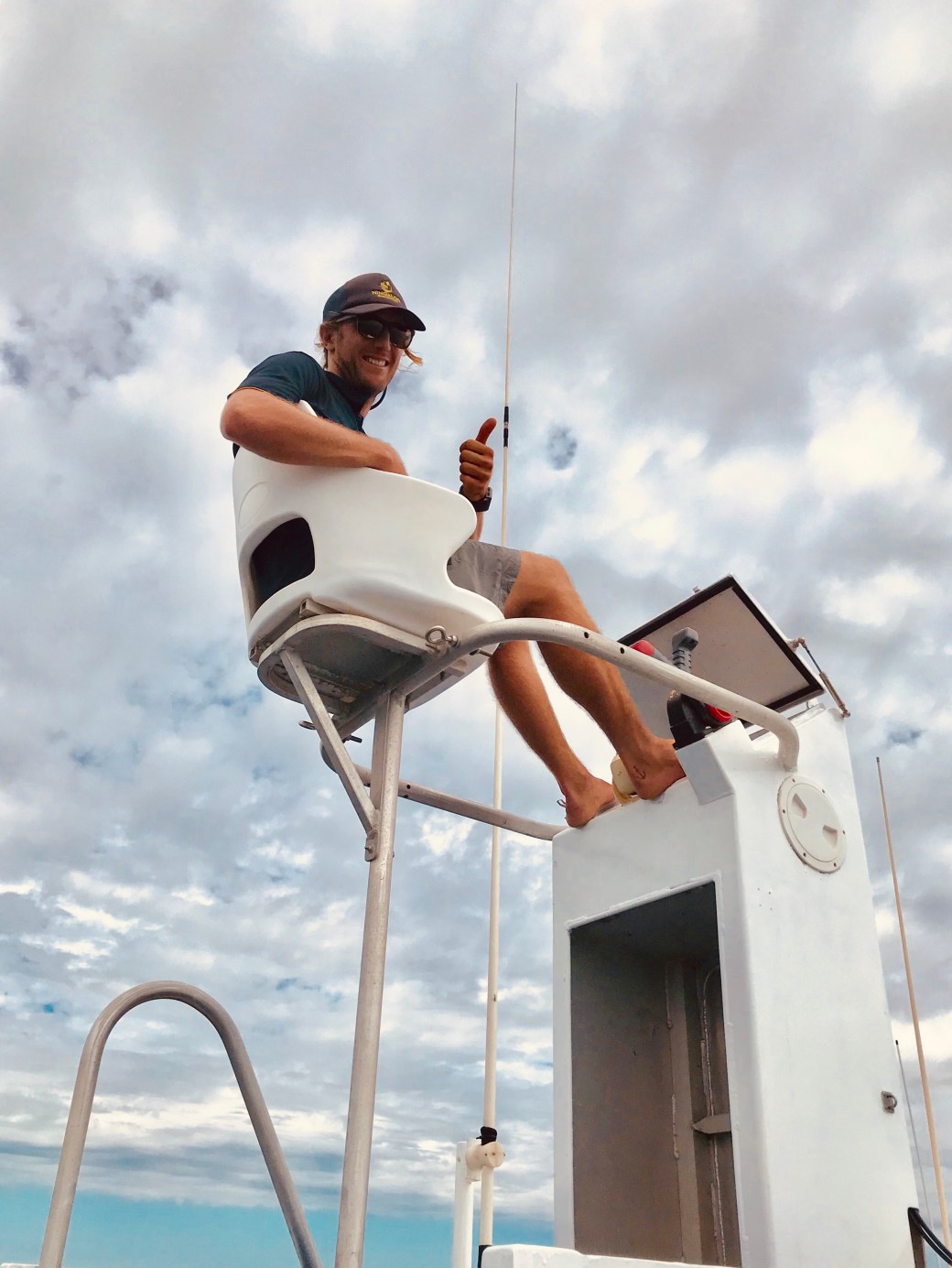 shut down the engines after the word came in from the spotter plane there was a whale shark nearby. 10 minutes after our first group got into water we were given a signal to jump in. We lined up behind the instructor, battling the waves, only to be told, ooops, the shark whale decided to dive deep. Get back on the boat and we will go find ourself another one. While the first group celebrated their whale shark, we waited disappointed. But in no time another creature was spotted and we went back into the water, this time first in line.
shut down the engines after the word came in from the spotter plane there was a whale shark nearby. 10 minutes after our first group got into water we were given a signal to jump in. We lined up behind the instructor, battling the waves, only to be told, ooops, the shark whale decided to dive deep. Get back on the boat and we will go find ourself another one. While the first group celebrated their whale shark, we waited disappointed. But in no time another creature was spotted and we went back into the water, this time first in line.  It is pretty hard to explain the excitement of meeting a whale shark face to face. (Or mask to fin.)
It is pretty hard to explain the excitement of meeting a whale shark face to face. (Or mask to fin.)
You are underwater looking at the empty dark blue and suddenly the figure of the huge spotted whale shark appears, hurtling towards you. As it passes, you turn and start swimming full blast to keep up with it  Nothing exists but your breath and the movement through the water. It is all consuming and exhilarating. The time stretches out. The ten allotted minutes are longer and shorter at the same time.
Nothing exists but your breath and the movement through the water. It is all consuming and exhilarating. The time stretches out. The ten allotted minutes are longer and shorter at the same time.
Back on the boat everyone now had huge grins on their faces. It was not the biggest of the whale sharks, more of a juvenile, about 6 meters long. Whale sharks are the biggest fish in the ocean and can reach 18 meters and weigh over 30 tonnes.
Ningaloo reef is the epicenter of the whale shark feeding aggregation from March to July with anywhere from 200-400 whale sharks passing through. We expected that we will get a swim or two and that’s going to be it. To our surprise and utter delight the crew kept looking for more whale sharks and asking us, “Do you want another swim?”
Of course we do! At one point one of the curious whale sharks decided to swim in a circle and check us out,  the little humans flailing about. We had to backpedal to try to keep the required distance. On the last, about the 7th swim some people decided they’ve had their fill, so the remaining troop went in at the same time and I think we combined our allotted times and had a really long farewell swim. If anyone, like us, was initially a bit reluctant to spend the AUS$400+ per person for the day, we now agreed that per swim or per swimming minute it wasn’t such a bad deal after all. Ad to that a nice lunch and a second afternoon snorkel in now sunnier weather and it suddenly seemed like a steal!
the little humans flailing about. We had to backpedal to try to keep the required distance. On the last, about the 7th swim some people decided they’ve had their fill, so the remaining troop went in at the same time and I think we combined our allotted times and had a really long farewell swim. If anyone, like us, was initially a bit reluctant to spend the AUS$400+ per person for the day, we now agreed that per swim or per swimming minute it wasn’t such a bad deal after all. Ad to that a nice lunch and a second afternoon snorkel in now sunnier weather and it suddenly seemed like a steal!  While the tail end of the cyclone made for very dramatic sunsets
While the tail end of the cyclone made for very dramatic sunsets  it gave us limited opportunities for snorkeling on Ningaloo reef. The Turquoise Bay was turquoise
it gave us limited opportunities for snorkeling on Ningaloo reef. The Turquoise Bay was turquoise  just for a little bit, enough for a few drifting snorkels, that proved there was indeed a rather thick soup of turtles, reef sharks and colorful tropical fish of all kinds.
just for a little bit, enough for a few drifting snorkels, that proved there was indeed a rather thick soup of turtles, reef sharks and colorful tropical fish of all kinds.  At Coral Bay there were more corals and different kinds of sting rays, including fun leopard and blu polka dotted ones.
At Coral Bay there were more corals and different kinds of sting rays, including fun leopard and blu polka dotted ones.  The wonderful thing about this coral reef is that you don’t need a boat to get to it, even little kids can see the colorful fish in knee deep sandy bays. Of course you first have to fly all the way to Australia and then get all the way to the top of Western Australia.
The wonderful thing about this coral reef is that you don’t need a boat to get to it, even little kids can see the colorful fish in knee deep sandy bays. Of course you first have to fly all the way to Australia and then get all the way to the top of Western Australia.
Since you already made this big effort you can get another big reward. At any time of year there are different types of whales to be seen. If you are a faithful reader of our blog you might remember that on the very tail end of our first visit to Western Australia we went to chase orcas in the Bremer Bay, an underwater canyon on the spectacular southern coast. In spite of all efforts of the Whale Watch Western Australia crew and the most beautiful clear day we saw not one living marine thing, let alone an orca. We were generously offered a voucher for a free cruise at any time. Well, now it was the time, not for the orcas, but blue whales and we wrote to the company that we were back. They honored their promise and booked us on their blue whale tour. We drove back to the capital Perth and the port of Fremantle just in time for Easter. To everyone’s shock it was the coldest and stormiest Easter on record and our tour was delayed by a few days. It was to be again on the very tail end of our stay and we could only hope for better luck.  Not to keep the suspense going too long, the morning of our blue whale tour was beautiful and sunny. The water was still a bit choppy, but I have taken my Dramamine with my breakfast and Mirek never gets seasick. I could not say the same for half the people on the cruise, who half an hour into our departure from port were so sick they could not stand up at all. I really felt sorry for them as I was once very sea sick on a boat in Hawaii. They could tell you a space ship has just landed on the horizon and you would just groan and say, “Can you please ask them if they could take me ashore really fast?”
Not to keep the suspense going too long, the morning of our blue whale tour was beautiful and sunny. The water was still a bit choppy, but I have taken my Dramamine with my breakfast and Mirek never gets seasick. I could not say the same for half the people on the cruise, who half an hour into our departure from port were so sick they could not stand up at all. I really felt sorry for them as I was once very sea sick on a boat in Hawaii. They could tell you a space ship has just landed on the horizon and you would just groan and say, “Can you please ask them if they could take me ashore really fast?”
What a terrible pity as very quickly we spotted a distant spout from a blue whale 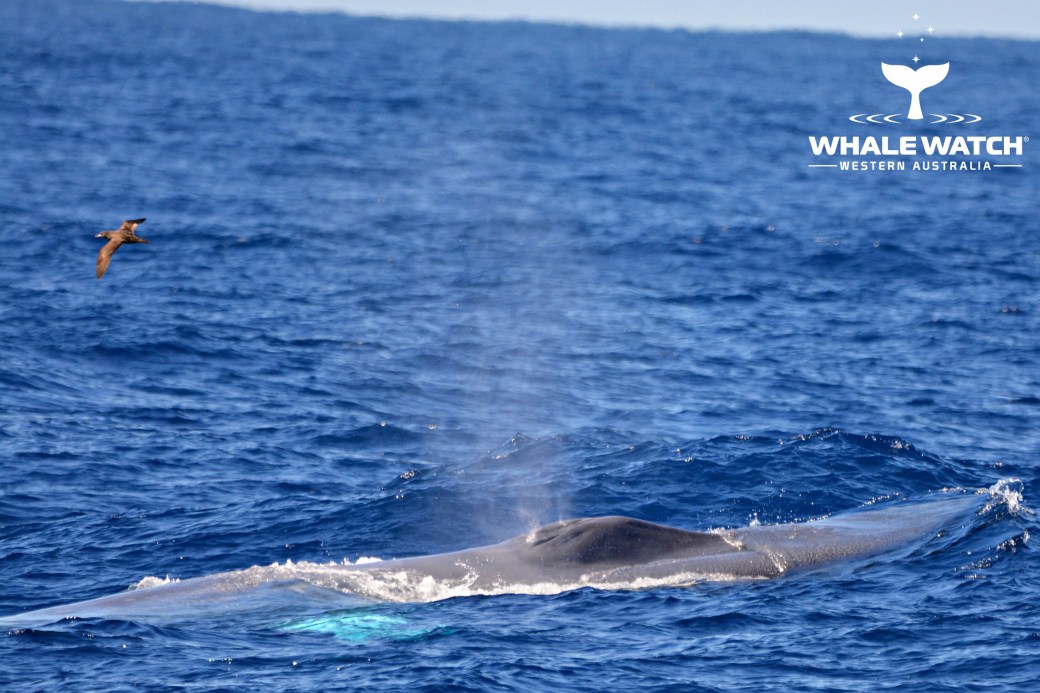 foraging in the Perth (underwater) canyon, looking for patches of krill. After establishing its surfacing and diving pattern we tracked it pretty much the whole day. Whenever we spied the spout after the resurfacing we sped in that direction, but for the high ethical and conservation standards stayed a respectful distance away. We were rewarded by the whale understanding we were not a threat and becoming comfortable with the vessel’s presence.
foraging in the Perth (underwater) canyon, looking for patches of krill. After establishing its surfacing and diving pattern we tracked it pretty much the whole day. Whenever we spied the spout after the resurfacing we sped in that direction, but for the high ethical and conservation standards stayed a respectful distance away. We were rewarded by the whale understanding we were not a threat and becoming comfortable with the vessel’s presence.
Blue whale is the largest animal in the world, reaching up to 33 meters and 170 tons. Ours was about 15-18 meters, a juvenile. It was in fact mottled gray in color. The name blue whale derives from its sea shadow, or shall we say underwater reflection, that is indeed beautiful turquoise blue. A very interesting aspect is also a fact that a blue whale leaves a footprint at it dives underwater.  It is a large sleek area that stays on the surface for awhile after the whale has disappeared.
It is a large sleek area that stays on the surface for awhile after the whale has disappeared.
Blue whales do not perform exciting breaching like humpback whales or wild hunting as the orcas, but they are still impressive to see. We were welcome up in the captain’s cabin and got our many questions answered by captain and the crew, which are one family, literally. The mom, dad and their two young daughters, who grew up on the boat and were homeschooled, are a perfect, well oiled, lovely seafaring machine. It is wonderful to see them interacting with each other and the guests. The older of the daughters provides a thorough informative commentary with a smooth voice worthy of a radio announcer.  We were so enthralled with the search, we could barely take a few minutes downstairs for the delicious lunch.
We were so enthralled with the search, we could barely take a few minutes downstairs for the delicious lunch.
Then we were treated to a very special dessert. A few white waves on the horizon multiplied into hundreds and soon turned into dolphin shapes racing towards our boat. 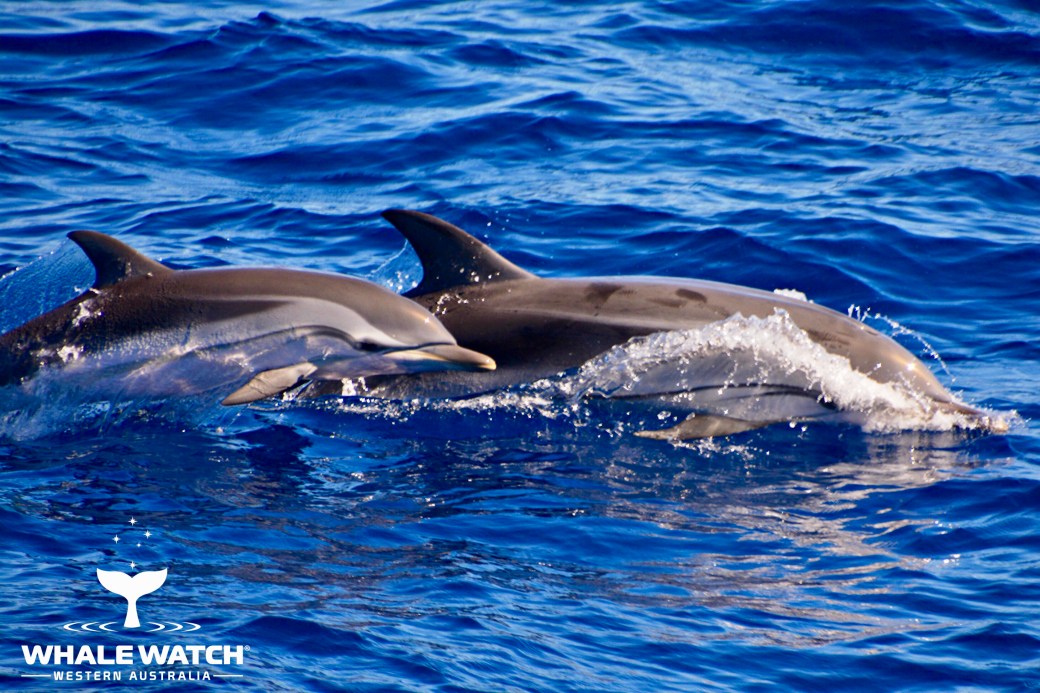 Soon we were surrounded by a joyful super pod of 500-800 yellow striped dolphins, a species, compared to the regular bottle nosed dolphins, not often seen, we were told.
Soon we were surrounded by a joyful super pod of 500-800 yellow striped dolphins, a species, compared to the regular bottle nosed dolphins, not often seen, we were told.
It was the most spectacular show ever. The dolphins swam in front, alongside and under the boat at full speed, then jumped in the air in graceful arcs and spins.   We have seen a fair share of dolphins in our lives, but this was an unforgettable thrill of a lifetime. We toasted it with a glass of champagne on our return journey to port. As the Whale Watch mom poured us a glass, she said, “My husband was so impressed that you returned to Australia for the tour that he extends an invitation for a free orca tour anytime you come back again.”
We have seen a fair share of dolphins in our lives, but this was an unforgettable thrill of a lifetime. We toasted it with a glass of champagne on our return journey to port. As the Whale Watch mom poured us a glass, she said, “My husband was so impressed that you returned to Australia for the tour that he extends an invitation for a free orca tour anytime you come back again.”
Never say never! Last year as we finished our big tour of Australia, we never thought we would return, now we were back for the the third time. We made some wonderful friends on the way and we literally fell in love with this largest, most unknown state of this smallest of all continents. 

WOW! OMG. Perth is now on the list and supercedes the Maldives.
Lucky you the trip definitely worthwhile.
LikeLike
Ah!!! Jenni answered one of her birthday questions and your blog changed her bucket list! The blue whale has long been a passion of mine… your descriptions and pictures were priceless!!!! Thank you for sharing 🐳
LikeLike
Wow!! You guys are making me want to go to Western Australia FOR SURE. What a once in a lifetime experience to get to see and swim with those sharks!!
LikeLike
You have the best adventures…love to read
LikeLike
Is there anything you two haven’t done? Swimming with the sharks takes the top. So fun looking at all the sea animals and adventures.
LikeLike
Well we have not done many things but the one on the top of my bucket list is a visit to Balmoral and have a salmon run fishing day with Prince Philip followed by a cup of tea at five with Her Majesty!
I am running out of time
considering my age.
Mirek
LikeLike
I cannot beleive you guys swam with Whale sharks! Really AMAZING! You nail every experience! Glad you enjoyed WA so much, it is a beautiful place on earth!
LikeLike
Amazing that you were able to swim with them in such an ethical way. I went in Mexico once and it was so unethical, the boats are really harassing the whale sharks. Happy to hear that that is not the case in Western Australia.
>
LikeLike
I can’t get over the scale of shark to human in the under water photography – it must have been a sight to see!
LikeLike
How great is Ningaloo? I didnt get to swim with the whale sharks but i did with huge manta ray! And the reef so close to the beach is wonderful too. So nice to see people come and explore our wild and rugged west!
LikeLiked by 1 person
Nothing like it!
LikeLiked by 1 person